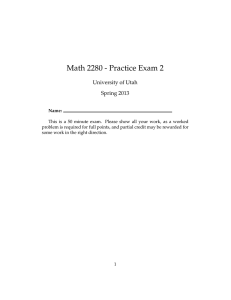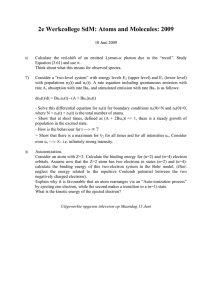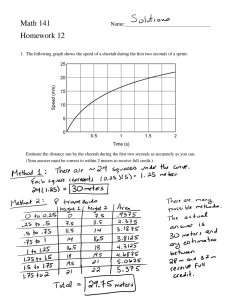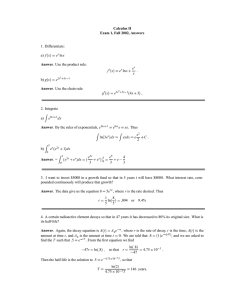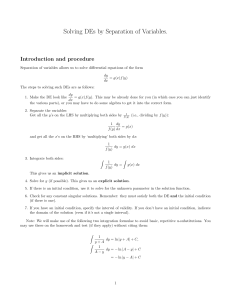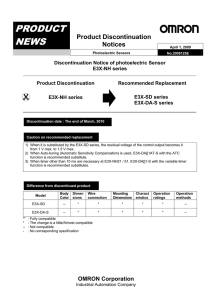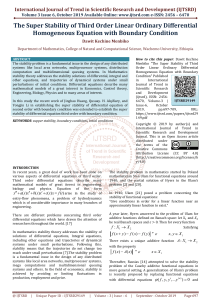Math 447/547 Partial Differential Equations Homework 2 Section 1.2
advertisement
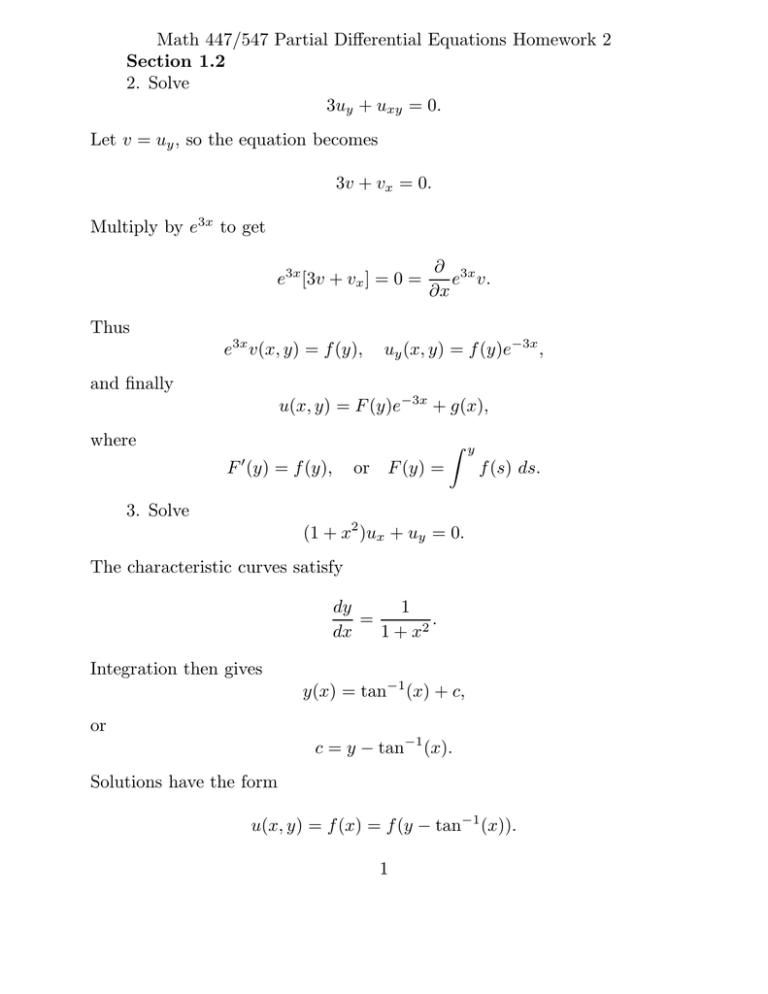
Math 447/547 Partial Differential Equations Homework 2 Section 1.2 2. Solve 3uy + uxy = 0. Let v = uy , so the equation becomes 3v + vx = 0. Multiply by e3x to get e3x [3v + vx ] = 0 = ∂ 3x e v. ∂x Thus e3x v(x, y) = f (y), uy (x, y) = f (y)e−3x , and finally u(x, y) = F (y)e−3x + g(x), where ′ F (y) = f (y), or F (y) = Z y f (s) ds. 3. Solve (1 + x2 )ux + uy = 0. The characteristic curves satisfy dy 1 = . dx 1 + x2 Integration then gives y(x) = tan−1 (x) + c, or c = y − tan−1 (x). Solutions have the form u(x, y) = f (x) = f (y − tan−1 (x)). 1 5. Solve the equation xux + yuy = 0. The characteristic curves satisfy y dy = , dx x or 1 1 dy = dx. y x Integration then gives log y = logx + c, or y = ec x, y/x = K = ec . Solutions have the form u(x, y) = f (y/x). 8. Solve aux + buy + cu = 0. There are at least two ways to solve this problem. One approach is to multiply by an integrating factor eax/c [aux + buy + cu] = 0. Letting v = ecx/a u the equation then becomes avx + bvy = 0, and this can be solved by the method of characteristics. A second approach starts with the substitution from page 7, s = ax + by, t = bx − ay. The equation becomes (a2 + b2 )us (s, t) + cu(s, t) = 0. 2 Rewrite this as us (s, t) + αu(s, t) = 0, α= c . a2 + b2 Now use the integrating factor eαs , getting eαs [us (s, t) + αu(s, t)] = 0 = ∂ αs [e u(s, t)]. ∂s This gives [eαs u(s, t)] = f (t), and so u(x, y) = exp(− u(s, t) = e−αs f (t) c (ax + by))f (bx − ay). a2 + b2 If the first approach is used you will probably obtain a solution formula with a different exponential factor. The ’missing’ factor is just absorbed into the f (bx − ay) term, although this may not be obvious. 9. Solve the equation ux + uy = 1. This is a nonhomogeneous linear equation, so our first job is to find a single solution up (x, y). We can take up (x, y) = x. The general solution to the nonhomogeneous equation is up plus any solution of the homogeneous equation ux + uy = 0. These have the form uh (x, y) = f (y − x), so the solutions of the original equation are u(x, y) = x + f (y − x). 3
